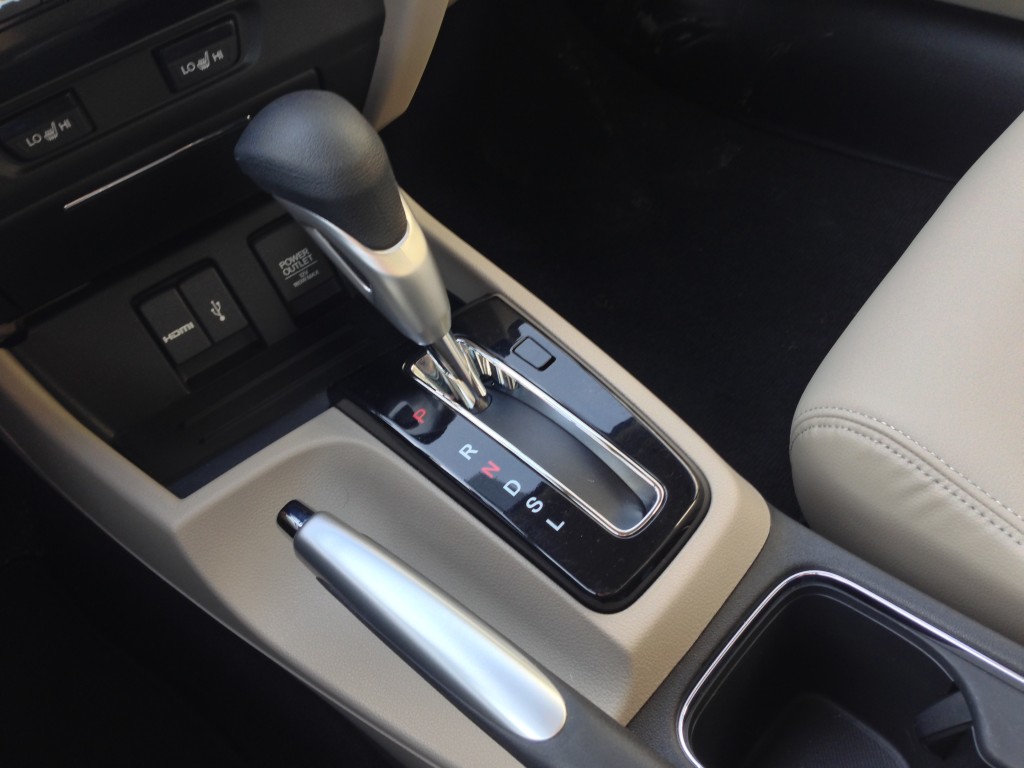If you're reading this in North America, the vehicle sitting on your driveway probably has an automatic transmission.
So do around 95 percent of other new vehicles on the U.S. market right now, though the Canadian figure is slightly lower. The numbers don't lie: Drivers just aren't buying cars with manual gearboxes any more.
But within the automatic options, there's never been so much choice. Conventional automatics with torque converters, continuously variable transmissions (CVTs), and now new dual-clutch transmissions are all widely available.
CVTs win
Now, after carmakers have spent a few years trying to sell direct-shift or dual-clutch automatic manuals in mass-market cars, it's starting to seem that CVTs will be the future choice for gas-saving vehicles.
Conventional automatic gearboxes will continue for quite some time to come, says The Car Connection, with up to 10 gears--versus the six that are standard today, or the four that were used a decade ago.
Of the other two types of automatic transmission, though, CVT is clearly winning the race.
The relatively recent dual-clutch gearboxes already falling out of favor. Chrysler, for example, is dropping its dual-clutch auto on several models,. Ford, too, has taken plenty of flak for driveability issues with its six-speed dual-clutch Powershift transmission.
VW DSG Transmission
That may seem a little odd, at first.
In theory, the dual-clutch transmission is a perfect solution to the automatic gearbox problem.
Gearchanges are often lightning fast, as the two clutches simultaneously disengage and engage their respective ratios (one working odd-numbered gears, the other even-numbered gears). Drive is more or less direct--like it is in a conventional manual--and this has benefits for performance and economy.
ALSO READ: Are CVTs The Fuel-Efficient Transmission Of The Future?
They also don't suffer from the driver dislike of the way that continuously-variable transmissions operate. In CVTs, a belt or chain moves continuously between two grooved pulleys, giving nearly infinite ratios depending on the ratio of the input and output at any given time.
The difference between engine speed and road speed can feel unnatural, and rather noisy under hard acceleration. Drive is almost never direct, giving an odd "disconnected" feeling.
Yet more than 10 percent of new vehicles now feature CVTs.
Manufacturers who have stuck with the technology, mainly Japanese brands, have refined it to a point that many traditional CVT bugbears have been minimized. And at the same time, their main benefit--fuel efficiency--has been maximized.

2014 Honda Civic EX CVT - Driven
They also cost less--hugely appealing for an industry closely monitoring its margins right now. And despite some concerns over early CVT reliability issues, Consumer Reports' data on more than 1.1 million vehicles suggests CVTs are the most reliable automatic transmission setup of all.
Dual-clutch units, on the other hand, have had teething problems. They're expensive to make, too, and require costly maintenance--Volkswagen's units need oil and filter changes every 30,000 miles, running into the hundreds of dollars each time.
While they excel under brisk driving--offering snappy shifts quicker than any manual and most conventional autos--they're often compromised at lower speeds.
If you've ever driven a dual-clutch equipped car in stop-and-go traffic where idle creep is the main forward speed--or around a parking lot at low speeds--you may be familiar with their jerky movements and feeling of constantly-slipping clutches that makes for lurchy and unrefined low-speed progress.
In all, says Jake Fisher, director of auto testing for Consumer Reports, "CVTs have proven that they work much better on mainstream vehicles."
A cursory glance at the EPA's fuel efficiency ratings confirms their major benefit, too--they're often the most fuel-efficient transmission available.
2015 Subaru WRX - shift lever with CVT
It's that economy that will really seal the deal for CVTs--the cars can be cheaper in the first place, and their numbers look better on an automaker's advertising materials.
A well-driven manual can still beat an auto on economy, of course, and at the other end of the spectrum, some drivers find them more fun to drive, too.
And some manufacturers--particularly Volkswagen, which invested heavily in dual-clutch autos in the early days, will continue to develop them for some time.
But as automakers continue to develop internal combustion engines, the continuously-variable auto could become transmission of choice for mixing performance, economy and cost.
_________________________________________













